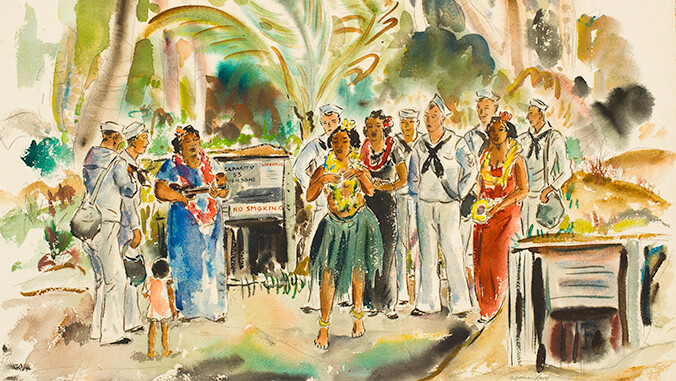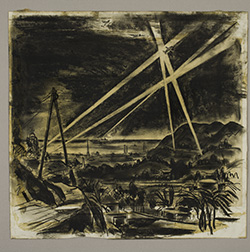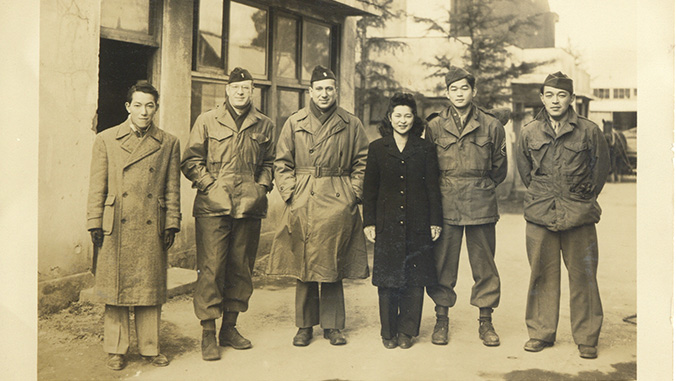
The University of Hawaiʻi at Mānoa Library is playing a major role in Hawaii: 150 Years of Japanese Migration and Histories of Dream Islands, a groundbreaking exhibit at the National Museum of Japanese History in Chiba, Japan. About 50 items, including rare documents and photos, from the UH Mānoa Library archives, Hawaiian and Asia collections are part of the exhibit on display from October 29 to December 26, 2019.
The first organized voyage that brought Japanese laborers to Hawaiʻi, known as the ‘Gannenmono,’ was in 1868 and that is where the exhibit starts. It traces Hawaiʻi from the pre-modern to modern period from various historical perspectives: from the experiences of migration and war, to images of paradise dream islands, as well as the perspective of the Kingdom and that of Native Hawaiians, according to the museum.

“We immediately recognized the tremendous value in participating in this project when were approached by the museumʻs chief curator a year and a half ago,” said UH Mānoa Interim University Librarian Monica Ghosh. “He enthusiastically discussed the museum’s hope to educate people about Hawaiʻi’s rich connection and history with Japan, which is in contrast with the Japanese image of Hawaiʻi as a tourist playground.”
Among the UH items on display are drawings (MacLeod’s art), a wide range of archival documents and records, maps (neighborhoods of the community) and photographs (from the Stanley Kaizawa Collection)—all of which depict the early experience and lives of Japanese immigrants to Hawaiʻi.
Other major participants include the Hoover Institute of Stanford University, Japanese International Cooperation Agency Museum, Hawaii Times Photo Archives Foundation, Hawaii’s Plantation Village and the Bishop Museum.
The National Museum of Japanese History is the largest history museum in Japan and its exhibits attract people from all over the world.

From left: Muramatsu (Toho Teatrical Corporation liaison with SCAP), Chief Theatre Censor Lt. Earle Ernst (later UH Mānoa Professor), Theatre Censor Lt. Seymour Palestin, Toho actress Sachiko Mitani, Registrar Sgt. Stanley Y. Kaizawa (MIS, Hawaiʻi Nisei), Typist Sgt. James Nakata
(Photo courtesy of The Stanley Kaizawa Collection, Asia Collection Department)

